| |
|
Napoleon Hill |
|
... The Merchant Prince of
Memphis |
| |
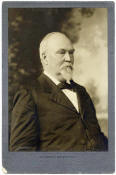 |
Napoleon Hill was an immensely successful businessman who literally
had the "Midas Touch". During the research for this page on the
"Historic-Memphis" website, we scanned through hundreds of old Memphis
newspapers. It's no exaggeration that his name appeared in one
or more articles on every page of the papers. And on the pages
featuring advertising, his name would be listed as "President"
and
"Trustee" on NUMEROUS Bank ads or Realty ads. His dominant trade
was "Hill, Fontaine, and Co., Cotton Factors and Wholesale Grocers".
It's amazing that one man could be associated with so many
businesses. It's no
wonder that he became the richest man in Memphis, and that his many
friends began calling him "The Merchant Prince of Memphis". |
|
|
|
|
|
Ironically, today he is rarely mentioned or remembered in the City,
although his name still appears around town. Recently the
Scimitar Building was renovated into a hotel. (Napoleon Hill was part
owner of the Scimitar and built this building in 1902). The name of
the new deluxe hotel: NAPOLEON HOTEL. Read on for more about this prominent family. |
| |
|
The "Prince's Midas Touch"
was involved the businesses below - and MORE: |
| |
 |
 |
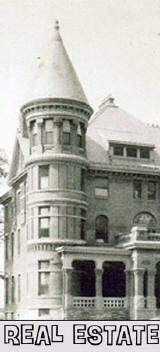 |
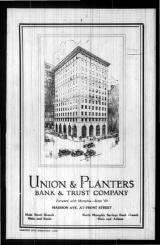 |
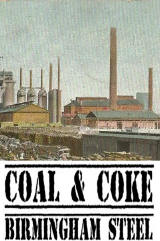 |
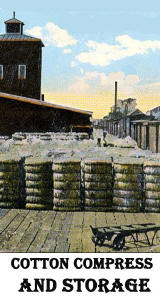 |
 |
| Grocery |
Cotton |
Realty |
Banking |
Steel |
Compress |
Railway |
| |
| |
|
Click
on small photos below to enlarge them. |
|
| |
|
|
| |
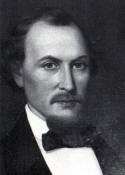 |
Early Life ...
Napoleon Hill was born in 1830 in Columbia,
Tennessee, near Nashville (Some references say he was born in Bolivar). He was one of 11 children. His
father, Duncan was a physician who died when Napoleon was quite young,
but he left the widow (Olivia L. Bill) and family well off with an
estate over $40,000, which included the Longwood Plantation in Marshall
County, Mississippi.
|
| Napoleon Hill |
|
|
|
|
|
|
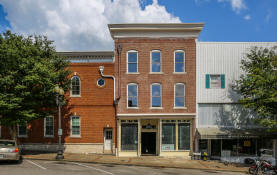 |
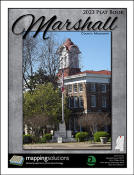 |
Hill's mother remarried (Josiah Deloach)
in 1848 and she and the large family continued to live on the Hill plantation.
According to reports Olivia was the idol of her new husband's life and he
checked her opinion on all matters, because "her judgment was unerring
and correct".
|
| Columbia, TN |
Marshall Co, MS |
|
|
| |
|
When he was 16, Napoleon moved to Bolivar, Tennessee where he clerked
in a dry goods store. He learned the business well. Three
years later he went to California during the Gold Rush. In
1857, he returned to Memphis, $10,000 richer, and ready to invest.
|
 |
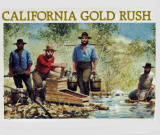 |
| |
Bolivar, TN |
Gold Rush |
|
| |
|
With the $10,000
from the Gold Rush, Napoleon opened a cotton brokerage house and a
wholesale grocery on the eve of the Civil War. He was a strong
Unionist, and sat out the war on his Bolivar farm. After the war he
returned to Memphis to build his empire. That original $10,000
company became the third largest cotton-factor and supply business IN THE
WORLD, and that's when his friends began calling him "The Merchant Prince
of Memphis". |
| |
| |
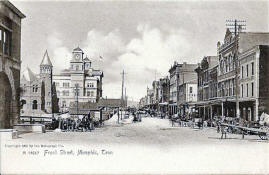 |
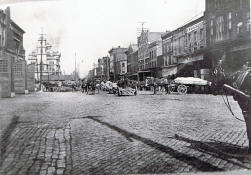 |
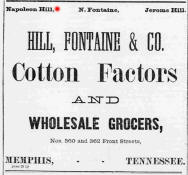 |
|
Memphis Front St -
Vintage |
Early Photo of Memphis
Cotton Row |
1878 Ad Hill, Fontaine
& Co |
|
| |
|
|
|
Hill, Fontaine & Co ... |
| |
|
Hill had become enormously wealthy
and in short order became one of the leading businessmen in the city.
Plus, he continued to invest more ... in banking and in real estate.
With each step he accumulated more wealth and social prominence. He
was so successful that at one time he owned much of downtown Memphis.
His partner in the Hill, Fontaine & Co. business was another prominent
Memphian - Noland Fontaine. Hill concentrated on the Cotton business
and Fontaine concentrated on the Grocery Business. The partnership
was and remained very strong. Noland Fontaine and his wife had 10 children and lived in a grand
home on Adams Avenue. They became known for their famous and
lavish parties. |
| |
 |
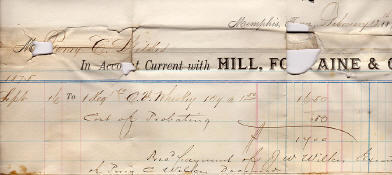 |
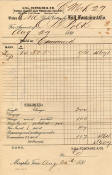 |
|
Noland
Fontaine |
1800 Invoice - Hill,
Fontaine & Co. |
1880 Invoice |
|
| |
 |
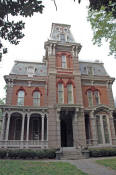 |
 |
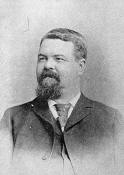 |
|
1887 AD |
Fontaine Home |
Fontaine Obit |
Noland Fontaine |
|
|
|
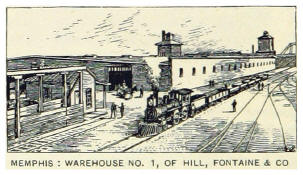 |
 |
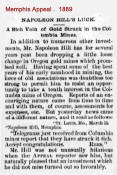 |
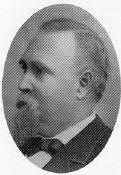 |
|
Hill-Fontaine Warehouse 31 |
Hill for Congress? |
"Hill Luck" |
Napoleon Hill |
|
|
|
|
There are frequent newspaper reports
that Napoleon Hill was "...one of the founders of the civic and
social life of the city". In additional there are frequent newspaper
articles that "Napoleon Hill would assume responsibility to keep
everything working like it should. Of course he was very successful
at this also. The article above "Hill for Congress?" contains
comments from Memphis citizens about what they think of Napoleon Hill. |
| |
|
|
|
The Hill Family ... |
| |
|
In 1897, Napoleon married Mary Morton
Wood. They had 8 children,
William Duncan (1859-1860),
Olivia
Polk Hill Grosvenor (1861-1934), Nina Wood (1864-1865),
Napoleon Jr (1866-1905), May Hill Overton (1868-1964),
Edwin Polk (1872-1873), Francis
Fontaine "Frank" (1874-1935), Matilda (No info).
William and Nina lived only 1 year. Edwin died at 7 months and
Napoleon Jr died young at 39. |
| |
|
|
| |
|
|
| |
|
After Napoleon's
death, his daughter Olivia Polk Hill Grosvenor inherited the Hill mansion.
Olivia who died in 1924, was one of the founder of the Art Association
which led to the establishment of the Brooks Museum of Art and the Women's
Club of Memphis. Her marriage to Charles Niles Grosvernor in 1885
brought the Hill-Grosvenor families together. The Grosvenor's had 3
children: Charles Jr, Napoleon, and Phoebe Olivia.
In 1919 the University Club was chartered and they leased the Hill
mansion. |
|
|
|
More Investments ... |
|
Memphis was growing, becoming
the world's largest cotton market and the nations largest wholesale
grocery distribution center. In 1873, Hill helped organize
the
Memphis Cotton Exchange and headed it in the early 1880s. Cotton
men owned and operated the city's cotton compress and storage facilites.
Hill succeeded founder Henry Montgomery as head of the
Merchants Cotton
Press and Storage Company in 1885. The growth continued when
Napoleon , Sam Tate, and Robert Snowden formed the
Citizens Railway
Company. This line was soon absorbed by Memphis City Railroad Co.
But Hill's biggest investment was his original
Hill, Fontaine and Company,
a cotton and wholesale grocery business. And as a sideline Hill
owned thousands of shares of Pratt Coal and Coke Company - which became
the Birmingham, Alabama steel industry. But there's more. He was
also a strong investor in
Union and Planters Bank
and served as a bank director. Plus he still found time
to serve on the
School Board. |
| |
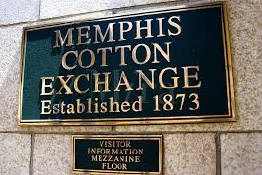 |
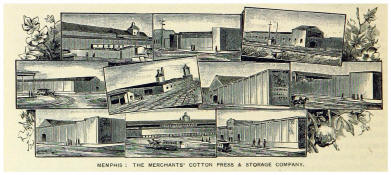 |
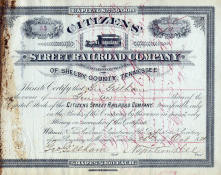 |
|
Cotton Exchange 1873 |
Merchants Cotton Press and Storage |
Citizens Railway Co |
|
|
|
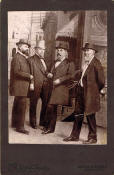 |
 |
 |
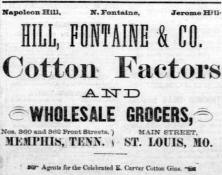 |
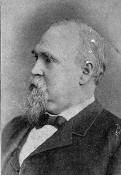 |
| 4 Men on a Corner |
Bank Presidents |
Union Planters |
1878 Ad |
Napoleon Hill |
|
|
|
|
As Memphis grew into the world's leading cotton market and
one of the nation's largest wholesale grocery distribution centers,
Napoleon Hill became richer, more powerful, and more socially prominent. |
|
|
|
|
| |
|
Mary Wood Hill ...
Mrs. Napoleon Hill knew how rich the
family was and she knew how to spend that money. Scarcely a day
went by when she wasn't mentioned in the Society Columns of the
newspapers. The famous story about their wealth is the time a
daughter was sent to boarding school outside the state. Mrs.
Napoleon sent along a personal chef to prepare special dishes for the
girl. (It's so ridiculous that it's probably true). During
their lives, Napoleon and Mary received extensive coverage in Memphis
newspapers for his business activities as well as for their social
affairs. She was often referred to as "Queen of Memphis
Society". |
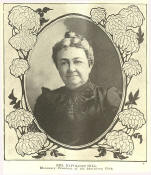 |
| |
Mary Wood Hill |
|
| |
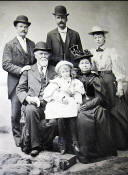 |
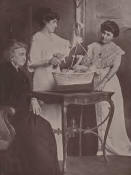 |
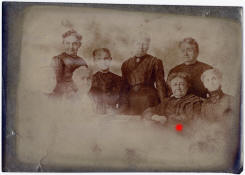 |
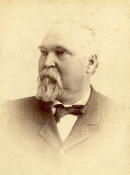 |
|
The Hill Family |
Mary and others |
Mary and friends |
Napoleon Hill |
|
|
|
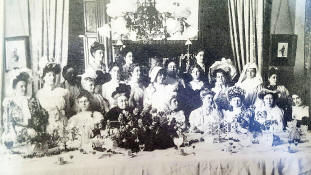 |
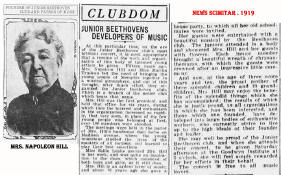 |
 |
|
Women's Club |
1919 Article |
Mary's Obit |
|
|
|
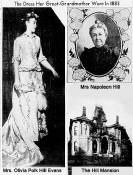 |

Silver Anniversary |
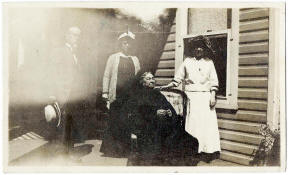
Mrs. Napoleon Hill
|
|
Mrs. Hill was president of the Beethoven Club
of Memphis
from 1895 to 1903. She was instrumental in setting up the division
that included young pianists. The object of the Beethoven Club
is to develop, sustain, and promote Classical Musicians.
The Club is still very active. |
|
Great
Granddaughter Olivia Polk Hill Evans |
|
|
|
|
|
| |
| |
_portrait_small.jpg) |
The Family Home ...
Hill's businesses and investments made him immensely wealthy,
powerful, and socially prominent. You would expect his family to live well? They did. Their home was a grand, ostentatious mansion on the site
of the Memphis Sterick building - the corner of 3rd and Madison. The design
of the home was French Renaissance style and was built in 1881. It was
considered the most opulent mansion in Memphis. But the location of
the home in the
heart of downtown Memphis , was the mansion's downfall. |
| Napoleon Hill |
|
|
| |
|
|
|
Sadly, there are no known photos
of any interiors of this fabulous building. |
| |
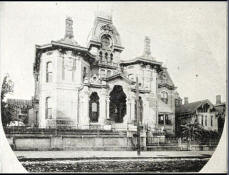 |
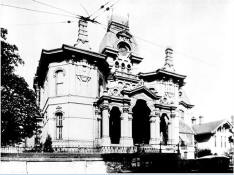 |
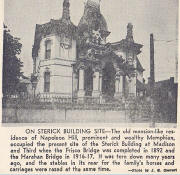 |
| |
|
Destruction of the Building |
|
| |
|
|
|
|
|
|
|
The Press Scimitar Building ...
In 1902 Napoleon built the
Scimitar building across from his home at 3rd and Madison. He was part owner of the
Evening Scimitar newspaper. The building was designed in a
Beaux-Arts and Romanesque-Revival style and it was a remarkable example of French
architecture during the Gilded Age. The architects of the
original building were Hunker and Chigazola. The building
was renovated in 2016 and is now the deluxe NAPOLEON HOTEL. |
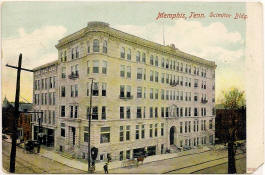 |
| |
Press Scimitar Building - 1909 |
|
| |
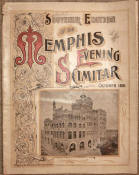 |
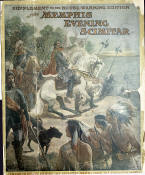 |
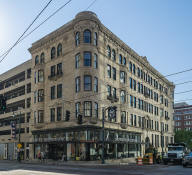 |
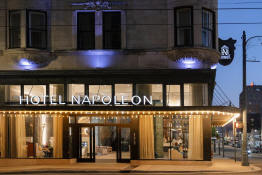 |
| 1891 Scimitar |
1903 Scimitar |
Hotel Napoleon |
Hotel Napoleon - 2024 |
|
| |
 |
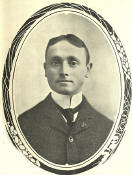 |
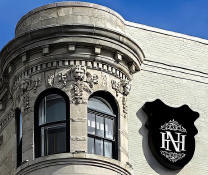 |
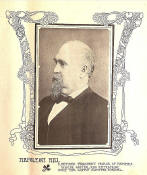 |
| W. J. Hunker |
A. A. Chigazola |
Details |
Napoleon Hill |
|
| |
| As you walk by the
building on Madison, look up and you'll still see the original lion
details and the N. H. crest. It's one of the few places one will
find any trace of Napoleon Hill. |
|
|
| |
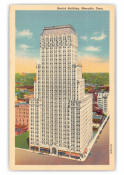 |
The Sterick Building ...
The owners of the Sterick
building made a big mistake when they selected this location for their
building. Instead of purchasing the land itself, they signed a
99 year lease with the Hill family. They spent more than $2.5 million to erect a
skyscraper on land they didn't own. And the lease terms were
that the Hill-Grosvenor Estate would collect monthly payments of $1,500
in the form of gold bullion. Those details have certainly caused
problems during the periods when the skyscraper has been sold.
Today the great building has been vacant for many years, and is "in
mothballs" ... waiting for the next developer who will hopefully
renovate it and make use of it. |
| Sterick Building |
|
|
| |
|
|
| .
|
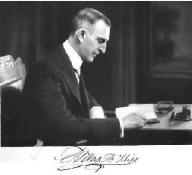 |
Francis Fontaine "FRANK" Hill
Frank Hill followed his father in the various family
businesses. He married well (Lizzie Willins) and lived in a
grand home on Union Avenue. He and Lizzie had 4 children: Napoleon,
Elizabeth, Frank Jr, and Marywood. Sadly Frank is perhaps mostly
remembered because of the two year public battle to save his home from being
demolished. |
| Francis Fontaine
"Frank" Hill |
|
|
| |
 |
 |
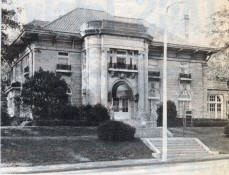 |
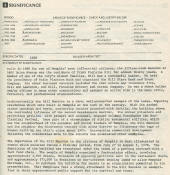 |
|
Newspaper clipping |
Napoleon |
Home on Union Avenue |
Info about the Home |
|
| |
|
|
| |
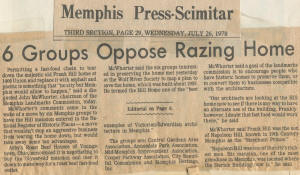 |
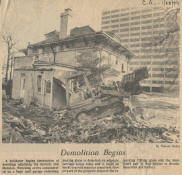 |
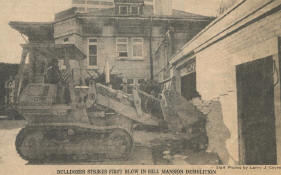 |
|
Destruction newspaper articles in no
particular order |
|
| |
|
|
|
Napoleon Hill died in November of 1901 and is buried in Elmwood
Cemetery. At the time of his death, his estate was considered the
largest in Tennessee.
According to Google, If someone
is described as a "Prince", it's a metaphorical expression which means
"someone who is exceptionally good, noble, and admirable in their
behavior or character, similar to how a prince is expected to be".
It suggests a person who stands out from others due to their
exceptional qualities - one who is heads-and-tails above others
in their virtues, social skills, and overall character. |
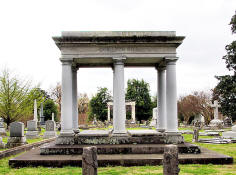 |
| |
Hill Memorial at Elmwood |
|
| |
|
During the research for this page on Napoleon Hill, we
found nothing published about him that would indicate anything other than the above "Google"
description of "Prince". |
| |
| |
| |
| |
|
CREDITS |
| |
|
Anyone wishing to research the Hill-Grosvenor
families will find papers and photos at the University of North Carolina- Chapel Hill Libraries.
And many of the items are online "Open for research" and with "No usage
restrictions". https://finding-aids.lib.unc.edu/catalog/04191 |
|
|
|
|
|
The
Historic-Memphis website does not intentionally post copyrighted
photos and material without permission or credit.
On
occasion a "non-credited" photo might possibly be posted because we
were unable to find a name to give credit. Because of the nature of
our non-commercial, non-profit, educational website, we strongly
believe that these photos would be considered "Fair Use. We have
certainly made no monetary gain, although those using this website
for historic or Genealogy research have certainly profited. If by
chance,
we have posted your copyrighted photo, please contact us, and we'll
remove it immediately, or we'll add your credit if that's your
choice. In the past, we have found that many photographers
volunteer to have their works included on these pages and we'll
also do that if you contact us with a photo that fits a particular
page. |
|
|
|
The "Historic-Memphis" website would like to acknowledge and thank the
following for their contributions which helped make this website
possible:
University of North Carolina at Chapel Hill,
Memphis
Public Library, Memphis University Library, Memphis Law Library,
Memphis Commercial Appeal, Memphis Press Scimitar, Shelby County
Register of Deeds, Memphis City Schools, Memphis Business Men's
Club, Memphis Chamber of Commerce, Memphis City Park Commission,
Memphis Film Commission, Carnival Memphis, Memphis Historical
Railroad Page, Memphis Heritage Inc, Beale Street Historic District,
Cobblestone Historic District, Memphis Historic Districts, Vance
Lauderdale Family Archives, Tennessee State Archives, Library of
Congress, Kemmons Wilson Family, Richard S. Brashier, Lee Askew,
George Whitworth, Woody Savage and many individuals whose assistance is
acknowledged on the pages of their contributions. Special
thanks to Memphis Realtor, Joe Spake, for giving us carte blanche
access to his outstanding collection of contemporary Memphis photos.
We do not have high definition copies of the photos on these
pages. If anyone wishes to secure high definition photos,
you'll have to contact the photographer or the collector.
(To avoid any possibility of contributing to SPAM, we do not
maintain a file of email addresses for anyone who contacts us). |
|
|
|
| |
| |
| |